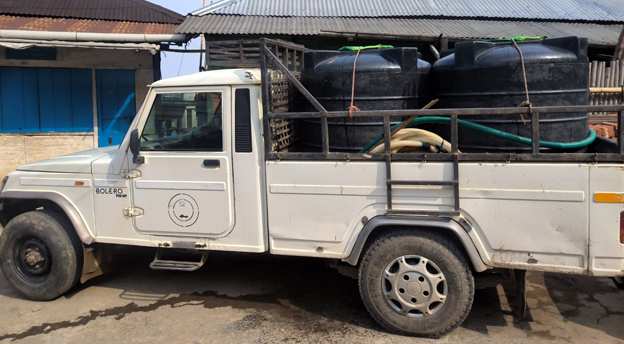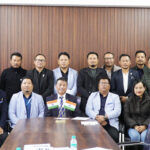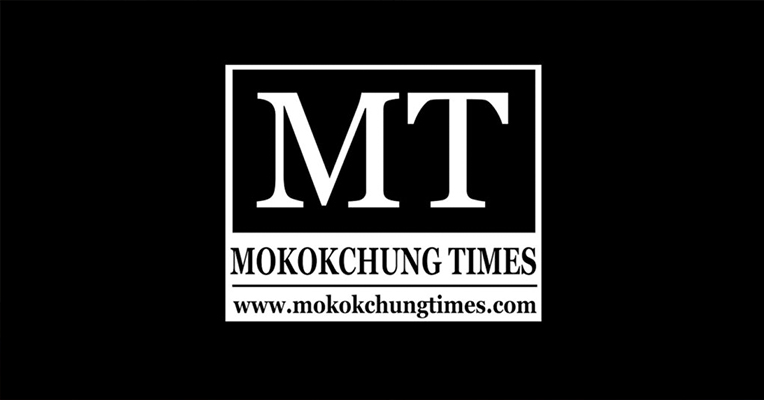Mokokchung is witnessing a thriving water supply business, with a fleet of over 30 pickup trucks making six to seven trips daily during the lean season, from November/December to March/April. Each trip, carrying 2000 liters of water, caters to meet the soaring demand in the town.
Mokokchung faces an acute water crisis, as outlined in the Vision Mokokchung 2040 document. According to the Public Health Engineering Department (PHED), during lean seasons, the department can only manage to supply around 80,000 liters of water per day.
Many residents lack access to public water supply, relying instead on local sources thereby contributing to the expansion of a thriving water supply business. A burgeoning water market has emerged, providing water through private pipelines, water tankers, and other means, tapping into nearby springs, streams, and private bore wells.
Panger, one of the water distributors, elucidates his routine, ferrying water to various locations such as Kumlong, Kichutip, Salangtem, Alempang, and Dilong wards using his pick-up truck making 6-7 trips each day.
Reflecting on over a decade involved in this activity, Panger reminisces, “It wasn’t always like this. Initially, it was just like two people catering to their private household needs. However, as water scarcity intensified, the demand for water increased, and people started asking to buy from us. That’s how we started selling the water. Today, there are more than 30 of us engaged in this business,” he shared.

Panger mentioned that there are various water sources they utilize. One is located in Kumlong ward, another in Jail Colony, another near Yimyu ground, and one more in New Market. “These water sources could either be bore wells or ring wells,” he explained. Apart from these, there are also other natural water sources in the outskirts of the town where they fetch water from.
Along, who has installed a bore well on his property, has been supplying water for sale to pickup trucks. He explained that he decided to install the bore well when the owner of a neighboring bore well, from which he had been sourcing his water needs, relocated.
“I dug this bore well in April 2022, and fortunately, the water we obtained was sufficient for our needs. Soon, demand surged, with many individuals and pickup truck water distributors seeking to purchase from us. We began selling it at Rs. 200 per 2000 liters,” said Along. He added, “Sometimes, we even extend assistance to those in need, such as weddings, funerals, and other important occasions.”
According to Along, they also distribute water to about 20-30 households in their neighborhood weekly from their bore well.
Regarding the bore well’s cost, he stated it amounted to about Rs 8 lakhs, inclusive of the installation of both local and company filters. These filters utilize light charcoal, bricks, and sand for purification. The bore well measures approximately 170 feet in depth and 4 inch in width.

Meanwhile, Meren, residing in Salangtem Ward, has been purchasing water from these sources for about a decade. Reflecting on their situation, Meren recalled a time when their primary water source was a small river near the Salangtem bridge.
Meren emphasized the necessity of their purchases, stating that they are compelled to buy water at least once a week due to the depletion of their previous water source. Despite having two connections from the Public Health Engineering Department (PHED), they have not received any water supply for the past four months.
Meren expressed that their complaints to the department have yielded no action, with officials attributing the lack of water to “dried-up sources”.
He further highlighted the erratic nature of water supply, particularly during dry seasons. During the dry season, it was estimated that a minimum of Rs 2,700 was spent on buying water.
The water crisis in Mokokchung is widely acknowledged, and the Vision Mokokchung 2040 document recognizes the Dikhu River as a reliable water source. However, it underscores the challenge of pumping costs and suggests exploring a public-private partnership (PPP) model, drawing lessons from past experiences. To materialize this vision, a thorough examination of a viable revenue model for water supply and distribution is imperative.
Angetyongpang, with a capacity of 0.80 lakh liters per day, stands as the primary gravity-based water supply for Mokokchung. The document stresses the importance of preserving the Minkong forest, which sustains Angetyongpang. Failure to conserve this crucial source could lead to its depletion, posing a direct threat to the town’s survival.
Collaborative efforts with Tichipami village for forest conservation in the Tichipami water source catchment area is deemed crucial in ensuring long-term water security for Mokokchung town.
(This is the first of a three-part series)



